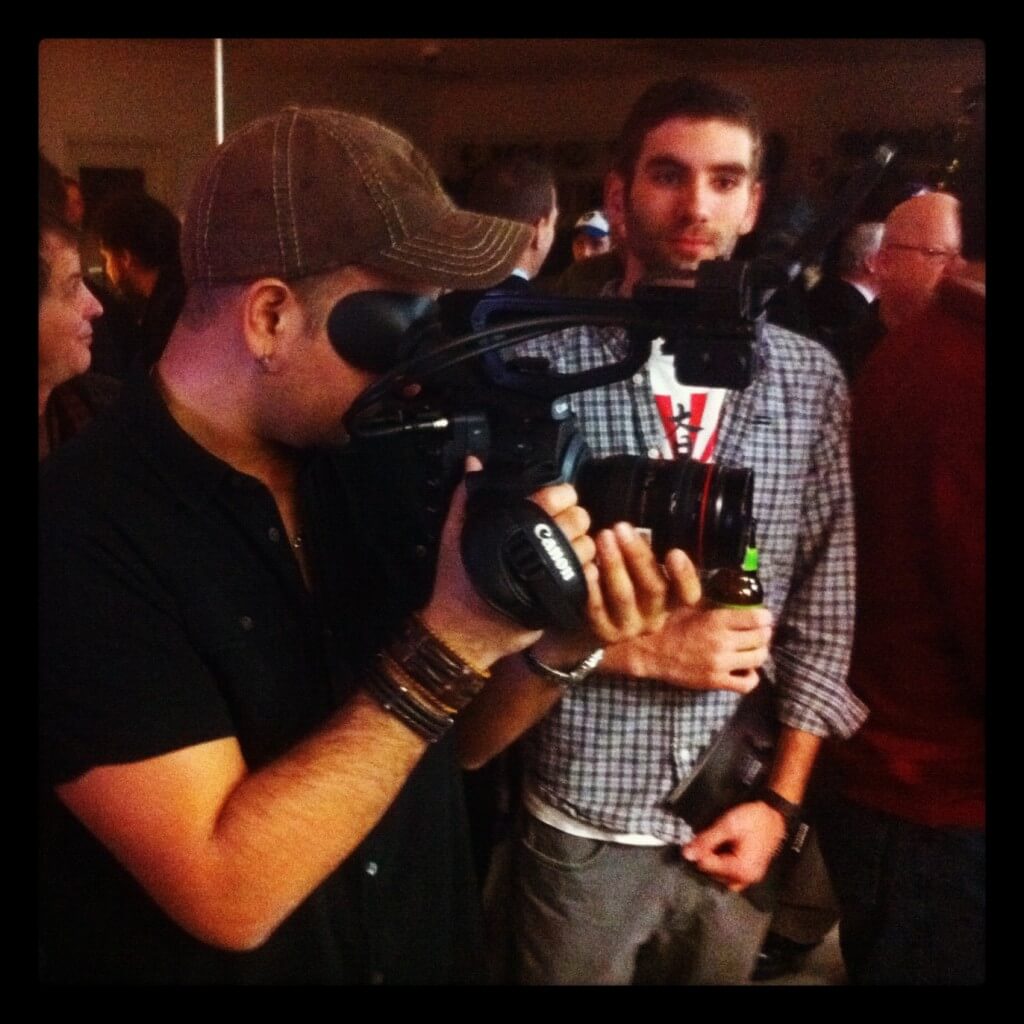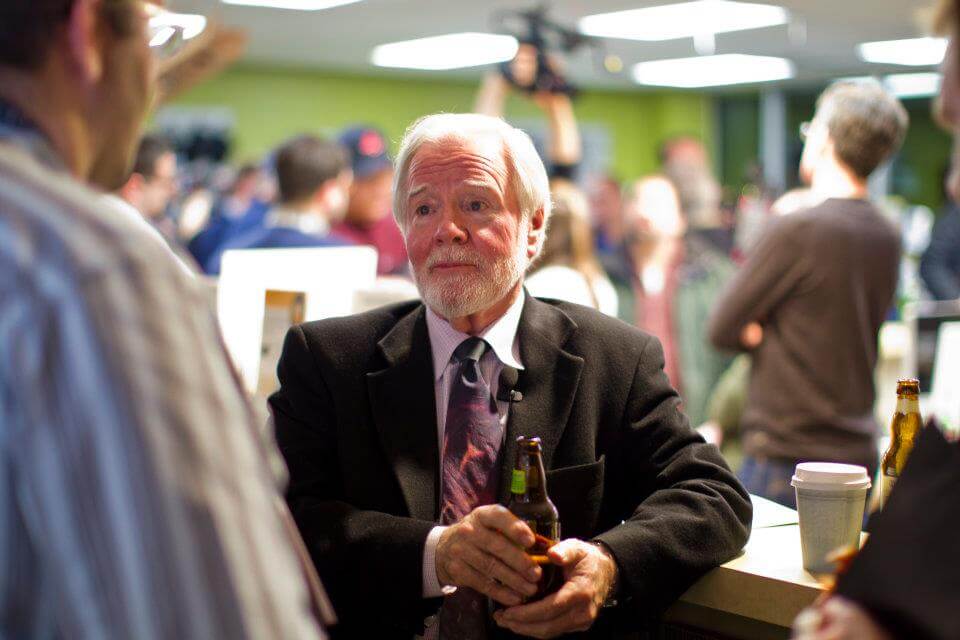
A little late in posting this, but finally wrote up my notes from Thursday’s “pub night” at Rule Boston Camera, featuring Canon’s Larry Thorpe and their soon-to-be-released EOS C300 camera, which has been making waves the last few months.
For those who don’t know Larry, he is co-writer of the original spec for HD TV, and an “engineer’s engineer”, as he was introduced that night. Having heard him speak a couple of times now, I would go a step further and describe Larry as a savvy marketeer, knowing how to work his crowd and exude so much excitement and confidence, it was infectious. As an aside, it’s actually quite apropos for Larry to be leading Canon into the professional moviemaking business in 2011 and 2012. As Larry shared at a PBS Quality Group Workshop on “Great Frame Rate Debate” (PDF) back in 2010, this isn’t the first time he’s played an instrumental role in helping a major camera manufacturer step into the moviemaking business…
In the late-1990’s, when Larry was working for Sony, he was involved in the development of Sony’s first HD camera, first in the market in fact. The interesting bit about this involved a major technical and political debate within Sony over what frame rate the HD camera would support. As fate would have it, Lucasfilm happened to contact Sony during this time, expressing interest in the digital HD movement. They tested Sony’s HD camera by recreating a scene from Star Wars, and one of the things missing was the “24 fps film look”. Larry was the one caught in the middle of wanting to support George Lucas and company, and a group of very resistant Sony Japanese execs. It was ultimately a private meeting in Japan that Larry arranged for Rick McCallum to go and explain why 24 fps was absolutely critical for HD to be embraced by filmmakers, and the reality of “if you build it, they will come”.
Anyhow, back to Rule Boston Camera’s pub night, and Larry’s current journey helping Canon make their official leap into professional film and broadcast production. This is how he told it…
[twocol_one]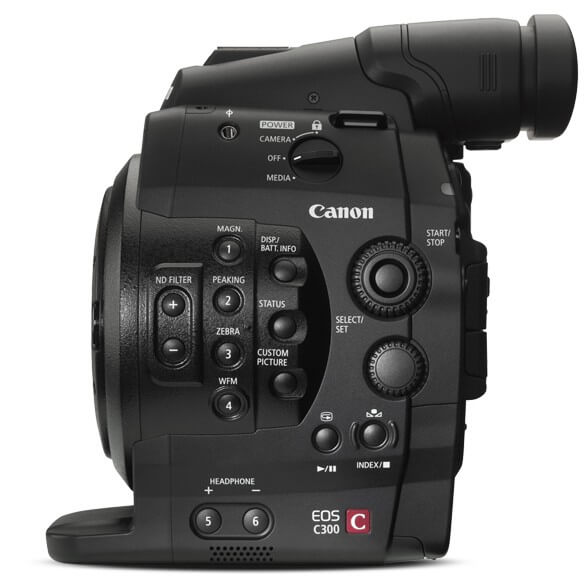 [/twocol_one] [twocol_one_last]
[/twocol_one] [twocol_one_last]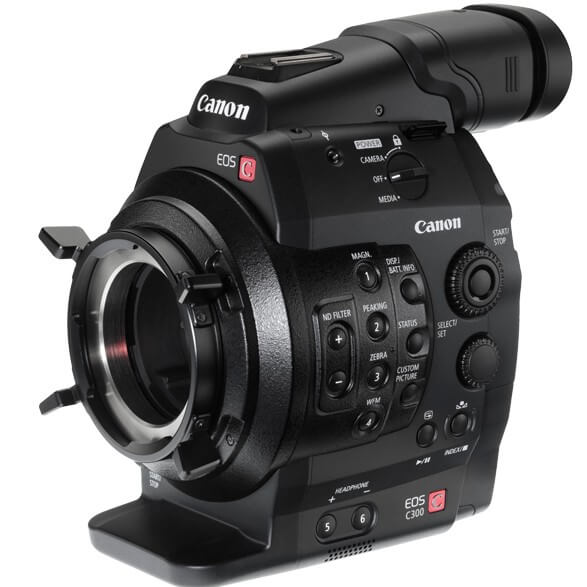 [/twocol_one_last]
[/twocol_one_last]
“No Apologies, This Is An HD Camera”
The Canon EOS C300 is the first of a series, with a roadmap that goes into a very long future. The sensor is a true blue 4K sensor, but Canon elected not to make a 4K camera. Why? Because Canon was the last guy on the block stepping into the high-end video domain. They’re looking to start a serious thriving business, so they chose to focus on where the action is right now, which is broadcast production worldwide, and most digital films – all are using HD. They view this as a marketplace they can jump in and build a business, though they have definitive plans to go where the market goes.
Similar to how Panavision swallowed the film market, Canon has spent the last 2 years developing their support and service offerings. They can replace any guts of the camera in service centers in Hollywood and NJ. Canon is viewing this as a cornerstone to their ability to become a real player in this market.
…But Not Your Average HD Camera
To make it a terrific HD camera, Canon elected not to use all of the sensor’s photosites . Instead, they chose to make a Quad HD image from the 4K sensor (i.e. 4 times the resolution of 1080p HD). This is the format they utilize. This is how it plays out inside…
They use the same Bayer algorithm as the Arris and REDs to encode the color information. However, unlike those other cameras, there is no debayer deconstruction algorithms involved. They use 1920×1080 to get Blue and Red channels out. Green on the other hand is read out as 1920×2160. In other words, there are actually two 1920×1080 Greens. This is the “secret sauce” of the Canon EOS C300. Here’s why – if you add these 2 greens, you get first-order cancellation of the noise, resulting in the cleanest green anywhere, and thereby, the cleanest Luma. No one else does this. It effectively raises the dynamic range of the sensor, providing 444 output from the sensor.
[iframe: width=”853″ height=”480″ src=”http://www.youtube.com/embed/oaCJ5SijXk4″ frameborder=”0″ allowfullscreen]
20,000 ISO??? Is That Even Usable?
The other “secret sauce”, which Canon is not talking a ton about because they’re still patenting it, is how the design of the sensor photosites is totally new. Sensitivity of the camera can go up to 20,000 ISO. Is there noise at that level? Sure there is, but it’s not what you’re used to seeing. There are no artifacts of structural noise, which makes the noise more look like “film noise”. Instead of the digital noise we’re used to seeing, the noise is evocative of film grain. As a result, there is very low aliasing as well. Not none, but remarkably little.
Note, with the C300 you will see grain at ~6400 ISO if you’re looking for it. And at 12,000 ISO, you’ll start to say, “Hmm, there’s a little grain there”.
By the way, the native ISO rating for the camera is 640. If you switch to ISO 850 and use Canon Log, you can capture 12 stops guaranteed, although testing is showing more than that. If this continues to be what testing shows, Canon may claim more when the camera is released.
So Why 8-Bit Then?
Unlike the Canon 5D Mark II and others in it’s still imaging lineage, the sensor for the EOS C300 was designed specifically for motion images. However, the sensor is the first step, and because they wanted to get to market quickly, they couldn’t wait for the year or two that a new generation chip would require, to update the image encoding. So as a result of being date-driven, the camera’s encoding is MPEG2, which by definition is 8 bit. The HD-SDI output is simply 8-bit data on a 10-bit carrier. All the internal processing is done in a high bit depth as much as and wherever possible, so as long as down conversion to 8-bit is done intelligently, you don’t lose a lot.
[twocol_one]
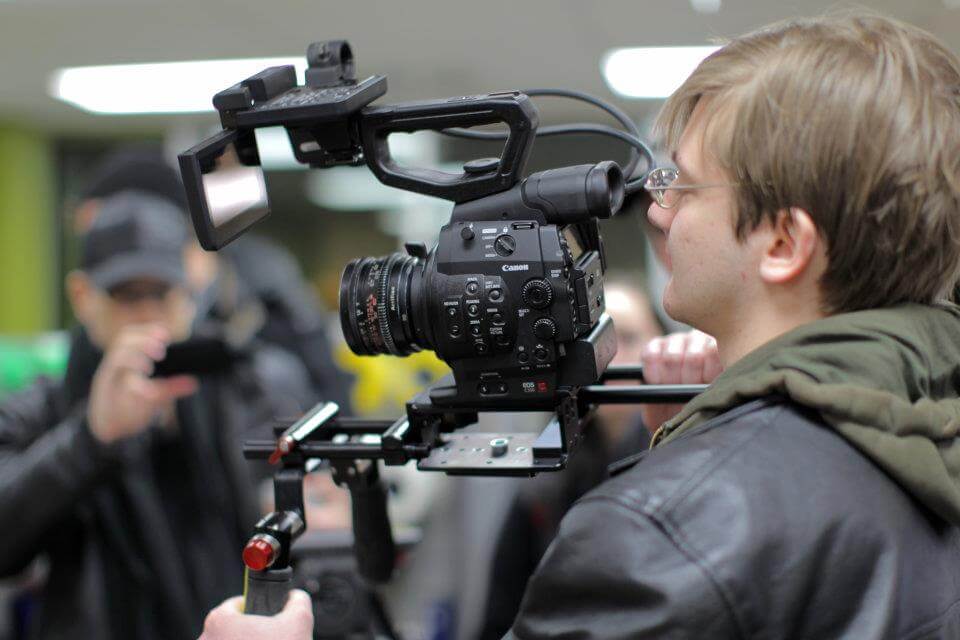
[/twocol_one] [twocol_one_last]
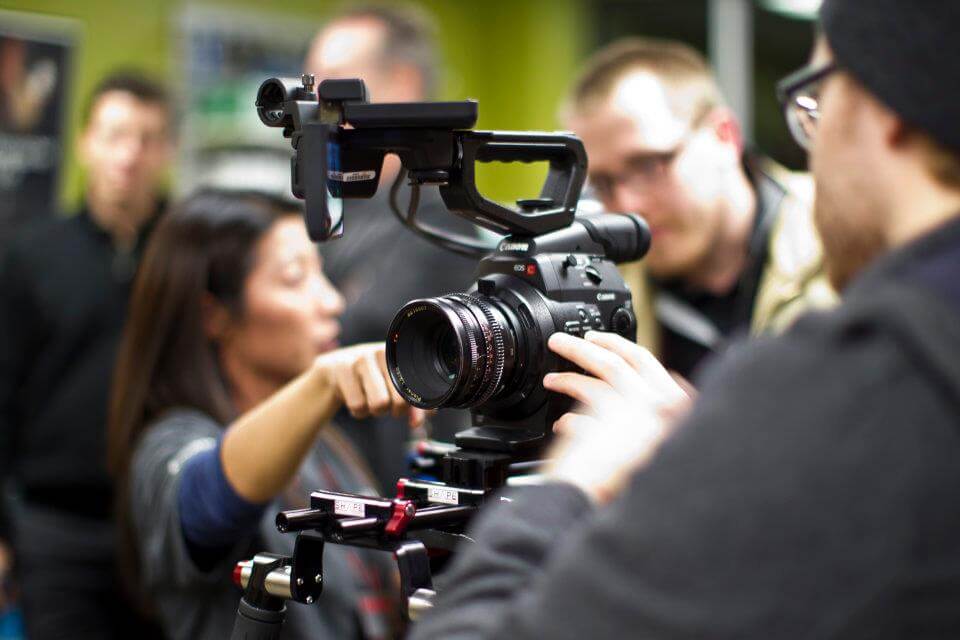
[/twocol_one_last]
What About Rolling Shutter?
It’s a CMOS sensor, but it’s handled cleverly. The sensor is capturing at 24 fps, but readout is done at 1/60th of a second, i.e. 2.5 times faster. The result is a reduction in rolling shutter bend by 2.5. It’s not 0, but it is impressive. A frame converter is then used to convert the fast readout to the appropriate encoding rate.
Alright, So Why An EF And PL Version?
Canon is the only company that makes everything form sensor to lenses. We have 70 million EF lenses out in the wild. There are many of those who will aspire to shoot video, so we needed to make an EF version for them. PL mount lenses are the defacto world standard though. The question was whether to make a camera with an adapter, or to make 2 different versions. After much deliberation, we said no. We view both universes as colossal, so we opted for the highest back-focus precision possible by focusing on 2 different models and let the 3rd parties make the adapters.
Note, for the cinema lenses Canon makes (which are designed to be 4K lens from the start), we will make both types. They’ll be the same lens, just a different mount.
Around NAB time, Canon will have a series of EF primes (4K ready as well). Choosing EF first because they will work with a 5D full frame and allow the 5D to be used as a B camera next to the C300.
The Proof Is In The Pudding
In July of 2011, Canon chose to release 8 cameras to DPs and directors to test out, provided funding for the projects, and gave them a list of things to test and challenge the camera on. All films were required to use the 50Mbit, MPEG2 422 straight off the camera for post-production work, managing all footage in 8-bit, to see how the images would hold up through post. They then broadcast the films on larger screens to scrutinize and critique. There was no recording to an uncompressed recorder of any sorts. It was all taken straight off the Compact Flash cards.
Here are the 2 of these films, screened at the talk. The first is Vincent LaForet’s Mobius, along with behind the scenes featurette.
[twocol_one]
[iframe: src=”http://player.vimeo.com/video/30215350?color=ffffff” width=”469″ height=”264″ frameborder=”0″ webkitAllowFullScreen mozallowfullscreen allowFullScreen]
[/twocol_one] [twocol_one_last]
[iframe: src=”http://player.vimeo.com/video/32696906?color=ffffff” width=”469″ height=”264″ frameborder=”0″ webkitAllowFullScreen mozallowfullscreen allowFullScreen]
[/twocol_one_last]
And the other was Stargate’s green screen heavy XXIT, which the C300 appears to have handled very cleanly:
[twocol_one]
[iframe: src=”http://player.vimeo.com/video/31617919?color=ffffff” width=”469″ height=”264″ frameborder=”0″ webkitAllowFullScreen mozallowfullscreen allowFullScreen]
[/twocol_one] [twocol_one_last]
[iframe: src=”http://player.vimeo.com/video/31618303?color=ffffff” width=”469″ height=”264″ frameborder=”0″ webkitAllowFullScreen mozallowfullscreen allowFullScreen]
[/twocol_one_last]
Note, this is just a sampling of what’s out there. All the C300 shorts, their behind-the-scenes, as well as the behind-the-scenes video on the behind-the-scenes videos (yes, that’s right) are available at Canon’s Media Gallery: http://cinemaeos.usa.canon.com/media-gallery.php
Questions & Answers
There wasn’t much of a structured Q&A, as Larry took questions throughout the evening, but here are a few standouts:
Why a separate audio module?
- Based on recommendation form folks we spoke to in NY and Hollywood, since audio is usually recorded separately, and also to avoid ripping cables when the camera is stripped down.
What’s coming out of the HD-SDI and HDMI?
- HD-SDI is base band 422 8 bit in a 10 bit carrier. HDMI is same base band HD.
What about frame rates?
- The sensor can go up to 60p. The processor and codec though can’t deliver 60p at 1080, so limited to 30p at 1080. 720 though has 60p. Also have 24p and 23.98 for TV and film.
What about a 5D replacement?
- A 5D replacement….just wait…not long
What about price and packaging? Note, I spoke to Larry about this 1-1 before the event…
- Canon will only sell everything (body and accessories) as a package. We had a lot of discussion on this and voted to sell it as a kit with handle and audio/monitor package. Unlike competitors (Red?), all the accessories we make, you get. You don’t have to go out and buy a viewfinder to use the camera. Is it smart? We think it is, for MOST people.
- I tried to make a case that many customers could probably go without the audio XLR accessory since they will likely record dual-system sound. If they provided the option to buy without the accessories, they could conceivably get under the magical $10,000 price point. His response was something along the lines of “the way we see it is you get a sweeter package at a tiny premium”. Oh well.
- (Word is the US price will be announced January 17th.)
Additional Reading
There are 3 white papers Larry posted recently that go into a lot more technical detail. You can download them from the Canon Digital Learning Center:


